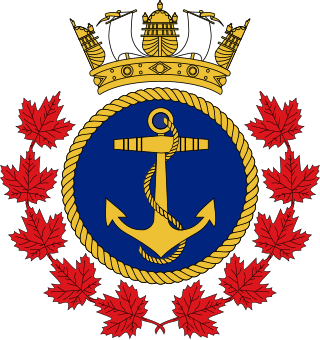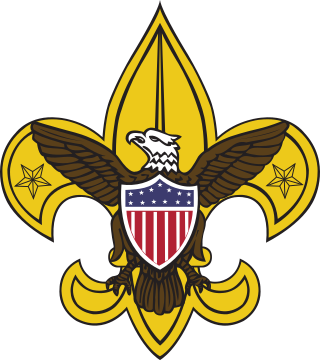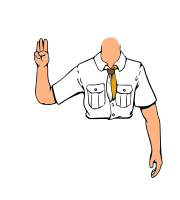
The Boy Scouts of America is one of the largest scouting organizations and one of the largest youth organizations in the United States, with over 1 million youth, including 176,000 female participants. The BSA was founded in 1910; about 130 million Americans have participated in its programs, which are served by 477,000 adult volunteers. BSA became a founding member organization of the World Organization of the Scout Movement in 1922.

Eagle Scout is the highest rank attainable in the Scouts BSA program by the Boy Scouts of America (BSA). Since its inception in 1911, only four percent of Scouts have earned this rank after a lengthy review process. The Eagle Scout rank has been earned by over 2.5 million youth.

Advancement and recognition in the Boy Scouts of America is a tradition dating from the inception of the Scouting movement. A fundamental purpose of advancement is the self-confidence a young man or woman acquires from his participation in Scouting. Advancement is one of the methods used in the "Aims and Methods of Scouting"– character development, citizenship training and personal fitness.

Cub Scouting is part of the Scouting program of Scouting America, formerly known as Boy Scouts of America (BSA), available to coeducational children from kindergarten through fifth grade, or 5 to 10 years of age and their families. Its membership is the largest of the five main BSA divisions. Cub Scouting is part of the worldwide Scouting movement and aims to promote character development, citizenship training, personal fitness, and leadership.

The Royal Canadian Sea Cadets is a Canadian national youth program sponsored by the Canadian Armed Forces and the civilian Navy League of Canada. Administered by the Canadian Forces, the program is funded through the Department of National Defence, with the civilian partner providing support in the local community. Cadets are not members of the Canadian Armed Forces.

Venturing is a core program of the Boy Scouts of America for young men and women ages 14 through 20. It is one of the Boy Scouts' three programs for older youth, which also include Sea Scouts and Exploring. The purpose of Venturing is to provide a positive environment where youth members, called Venturers, can lead the adventure, take on new leadership roles, and mature into responsible adults.

Varsity Scouting was a program of the Boy Scouts of America (BSA). It was an alternative available to boys ages fourteen to eighteen until the end of 2017. It used the basic Boy Scouting program and added high adventure, sporting, and other elements that were more appealing to older youth to accomplish the aims of character development, citizenship training, and personal fitness. Varsity Scouts were organized into teams; separate chartered units from a Boy Scout troop.

The Boy Scouts of America (BSA) use uniforms and insignia to give a Scout visibility and create a level of identity within both the unit and the community. The uniform is used to promote equality while showing individual achievement. While all uniforms are similar in basic design, they do vary in color and detail to identify the different membership divisions of Cub Scouting, Scouts BSA, Sea Scouts, and Venturing. Many people collect BSA insignia such as camporee and jamboree emblems, council shoulder strips and historical badges.

Seabadge is the advanced leadership and management course for adult leaders of the Boy Scouts of America's Sea Scout program.

A Scout leader or Scouter generally refers to the trained adult leader of a Scout unit. The terms used vary from country to country, over time, and with the type of unit.

Scouts BSA is the flagship program and membership level of the Boy Scouts of America (BSA) for coeducational young people between the ages of typically 11 and 17. It provides youth training in character, citizenship, personal fitness, and leadership, and aims to develop the skills necessary to become successful adults.

The Boy Scouts of America (BSA) was inspired by and modeled on The Boy Scouts Association, established by Robert Baden-Powell in Britain in 1908. In the early 1900s, several youth organizations were active, and many became part of the BSA.

Sea Scouting has existed in Ireland since 1912 and is a programme framework within Scouting Ireland.

The Scout Association's Sea Scouts are a branch of the association dedicated to boating and water-based activities such as sailing, canoeing, motorboating and water navigation. The association approved a special uniform for Sea Scouts in 1910 and, in 1912, the association formally adopted use of the name "Sea Scouts". Specialist Sea Scout troops have existed ever since. They are usually based by the side of water, either the sea, lake, river or canal.

Square knot insignia are embroidered cloth patches that represent awards of the Scout associations throughout the world.

The Quartermaster Award is the highest rank attainable in the Sea Scouting program of the Boy Scouts of America.
The Scouter's Training Award is an adult recognition of the Boy Scouts of America. This award is available across several different program areas and can be earned more than once.

The Venturing Summit is the highest rank for youth in the Venturing program of the Boy Scouts of America. It requires Venturers to earn the Pathfinder Rank, participate in adventures, and demonstrate leadership, service and personal growth.

In the Boy Scouts of America, a Scout leader refers to the trained leaders of a Scout unit. Adult leaders are generally referred to as "Scouters," and the youth leaders are referred to by their position within a unit. In all Scouting units above the Cub Scout pack and units serving adolescent Scouts, leadership of the unit comprises both adult leaders (Scouters) and youth leaders (Scouts). This is a key part of the Aims and Methods of Scouting. In order to learn leadership, the youth must actually serve in leadership roles.




























